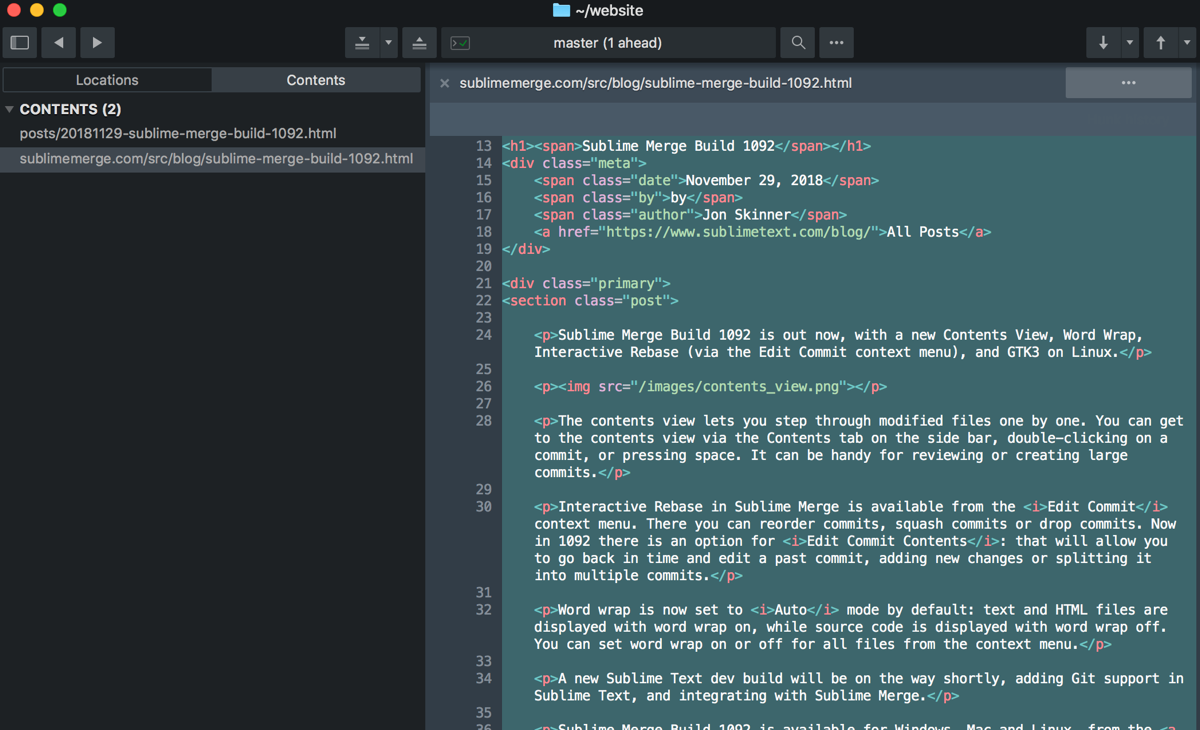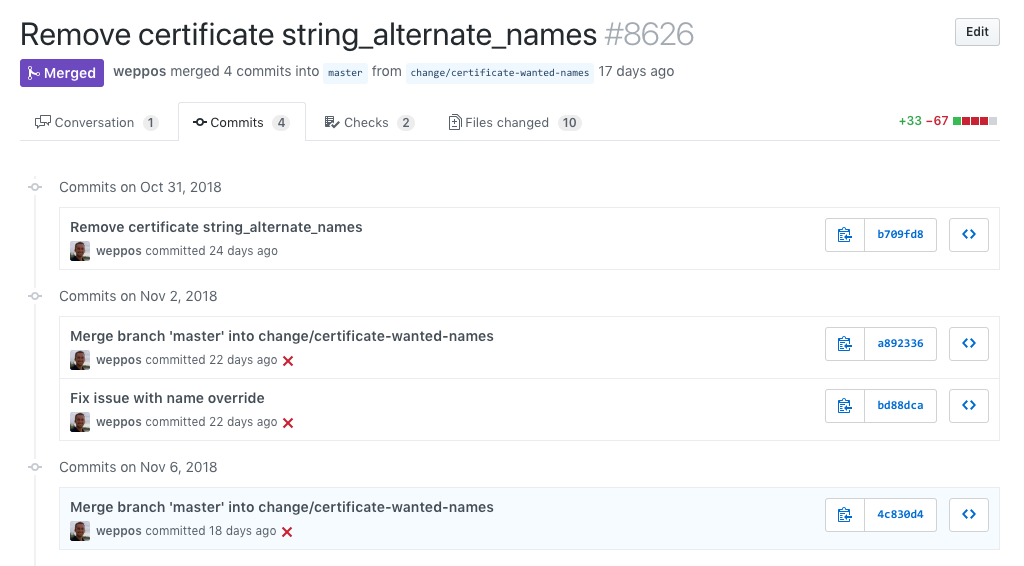
- #Sublime merge squash commits manual
- #Sublime merge squash commits Patch
- #Sublime merge squash commits code
- #Sublime merge squash commits plus
- #Sublime merge squash commits series
(Merged by Junio C Hamano - gitster - in commit fac9ab1, ) Documentation/git-bisect.txt: add -no-ff to merge command See commit 8dd327b () by Mihail Atanassov ( matana).
#Sublime merge squash commits manual
The " git merge -no-commit" needs " -no-ff" if you do not want to move HEAD, which has been corrected in the manual page for " git bisect". It involves the step where you reapply the commit you are testing on top of your relevant master commit (which was ea3d736 in the OP's case) (And git bisect -first-parent is available with Git 2.29+ - Q4 2020) Warning: the git bisect section regarding " Automatically bisect with temporary modifications" has been updated with Git 2.25 (Q1 2020). G.bisect('start', commit_ids, commit_ids) To test the claim that '107ca95.3e667f8 are never checked out'.Ġx3830e61: )'.format(msg=repo, test='Good' if repo else 'Bad'))Ĭommit_ids = g('rev-parse', 'HEAD').strip()
#Sublime merge squash commits code
The code then tries to find the breaking change automatically.

Each commit has a test.sh which can be used (Bad)Ĭommand to run: python3 script.py """ The following code creates a git repository in '/tmp/git-repo' and populates From then on, it bisects the linear history as would be expected.(Read "Checking merge bases" from article mentioned above.) Notice that first 'Add Admin notice' is checked (line 4) because that provides the most information.As mentioned above, the question was certainly using a different version then the one I used (Question is from 2013, Git 2.11 is from 2016).Also the section "Checking merge bases" might be relevant. Please read the section "Bisection Algorithm" in this article by Christian Couder."commits 107ca95.3e667f8 are ignored": Please note, that the commit you marked as "good" will not be evaluated because git already knows it to be good.Run the code below and verify that a commit with message Add menu styles. I wrote some code to check whether it is evaluated or not. One explanation is that Git improved the algorithm for bisect, or that the questioner made a mistake in marking commits. I decided to investigate, and found that I could show that the behavior of Git is different to what the question says it is. This is a very old but unanswered question. Is there any way that I can essentially "flatten" the history during the bisect to test those commits? I know I can use an interactive rebase to flatten the history, but I do not want to have to do that. No matter what I do, 107ca95.3e667f8 are never checked out to be tested. Here is roughly what I've done: git checkout master I happen to know that 43a07b1 is the commit that introduced a regression, but it is never evaluated. When I run a git bisect, commits 107ca95.3e667f8 are ignored. I know that 107ca95 is good and 3830e61 is bad. I am trying to learn more and git bisect, but am having trouble with this history. * 0f5e148 Improve function for getting page template.
#Sublime merge squash commits series
Sure, you can make two MRs, but with a path series style MR you are free to choose what make sense for you and your team.I have a history that looks like this: * 3830e61 Add data escaping. It would be hard to see the bugfix in a squashed commit. Imagine a MR where you refactor a bunch of code and then make a oneline bugfix. If you squash commits then signal to noise is much worse. Smaller commits are a blessing if you need to dig through old changes when debugging a problem and want to understand why and how something is the way it is. We use bazel to build and test, so verifying each commit in a branch is very fast since bazel is good at incremental builds. This makes it easy to review, use git bisect, etc.

I've setup gitlab to test all commits in a merge request, ensuring that each commit is complete. No, that's not a problem for short lived branches belonging to a merge request. Yes, this means you should edit the commits when problems pop up.

#Sublime merge squash commits Patch
I like to look at a merge/pull request more like a patch series (see what's recommended for linux to get an idea: ).
#Sublime merge squash commits plus
Big plus if you also have good commit messages, since that will help you when looking at a commit months or years from now.

Retaining individual commits makes the job much easier. I speak from the experience of doing maintenance on large code bases where the commit history has been a valuable source of information/documentation. Squashing a merge request into a single commit is an evil thing.


 0 kommentar(er)
0 kommentar(er)
